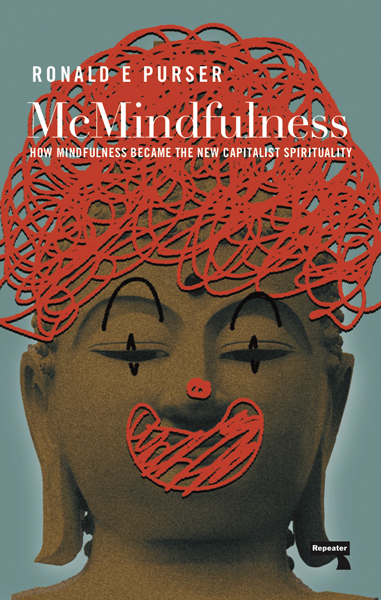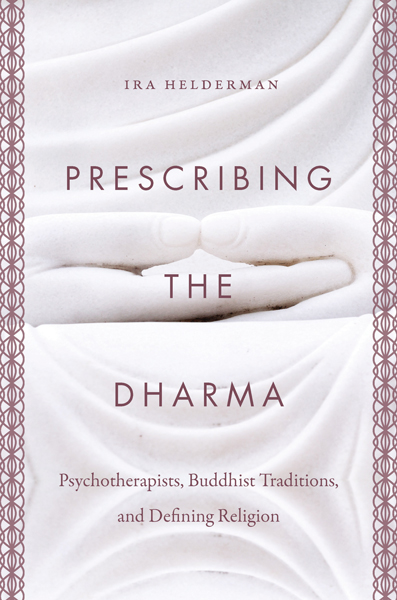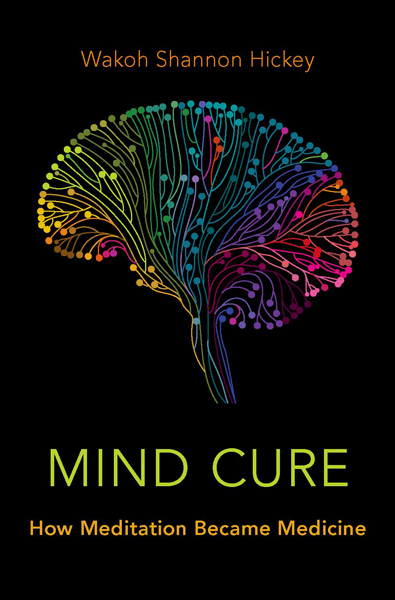Since the emergence of Buddhism in the first millennium BCE, many of the tradition’s central texts and most famous practitioners have had much to say about well-being. The health benefits of practices such as meditation, healing rituals, and moral cultivation are detailed in countless sutras, narratives, and other historical documents from around the Buddhist world. Indeed, they played an important role in the spread of Buddhism to new cultures in Asia, where the tradition was often taken up by converts precisely because it promised new solutions to disease, epidemics, longevity, and other health concerns.
As Buddhism has gained increasing popularity in the West over the last century, many are once again paying close attention to its potential health benefits. American popular media have been particularly fixated on the salubrious effects of mindfulness meditation, which medical researchers have been studying intensively since the early 2000s. But in the last few years a growing number of scholars of Buddhism have been raising notes of caution, critiquing the mindfulness movement and other forms of “medicalized meditation” on various historical and ethical grounds. Three new books provide particularly thoughtful analyses of the intersection of Buddhism, meditation, and health. Written by academics who are both scholars and practitioners of meditation, these books detail the complex historical processes that have led to meditation’s role as a mainstream mental health intervention in the United States. They also point out what has been lost in translation.
Coming from different corners of the academy, the books’ authors range widely in approach. Yet taken together, they provide a detailed examination of how Buddhism’s longstanding historical connections with well-being have been contested and reshaped as the tradition makes its way into American culture.
 Ronald Purser is a professor of management at San Francisco State University. His 2013 Huffington Post article, “Beyond McMindfulness,” coauthored by Zen teacher David Loy, was the first critique of the mindfulness movement to gain mainstream notice. Now, in McMindfulness: How Mindfulness Became the New Capitalist Spirituality (Repeater, July 2019, $15.95, 304 pp., paper), Purser takes his scathing critique of the contemporary mindfulness movement several steps further.
Ronald Purser is a professor of management at San Francisco State University. His 2013 Huffington Post article, “Beyond McMindfulness,” coauthored by Zen teacher David Loy, was the first critique of the mindfulness movement to gain mainstream notice. Now, in McMindfulness: How Mindfulness Became the New Capitalist Spirituality (Repeater, July 2019, $15.95, 304 pp., paper), Purser takes his scathing critique of the contemporary mindfulness movement several steps further.
If you expect books by academic professors to be dry, hold on to your socks. This is a full-scale assault on mindfulness, and Purser takes no prisoners. If you are unfamiliar with his work, you may be surprised that the chief objection the professor of management has about the mindfulness movement is its complicity with capitalism. As a self-described longtime Buddhist from a working-class background, Purser gives the impression that this is a personal issue for him. Infusing his writing with a social and political imperative, Purser argues that it is his “moral duty to start speaking out” against the self-serving co-optation of mindfulness, which he feels deprives the practice of its “revolutionary” power to transform society.
One feature of modern-day capitalism, he argues, is its mischaracterization of its own negative side effects, such as stress and anxiety, as individual shortcomings or pathologies. Once Jon Kabat-Zinn and others developed mindfulness-based interventions stripped of Buddhist content and retooled as therapeutic practices, his argument goes, entrepreneurs were able to package it as a commodity to be sold in the form of workshops, meditation apps, books, and other products. Taken up and promoted by venture capitalists, lobbyists, and other economic and political elites, it could be deployed by corporations, schools, and the military. And according to Purser, it could be foisted on a stressed-out workforce to keep us docile and productive.
Because proponents of mindfulness consider both stress and its management to be strictly individual matters, popularized mindfulness contributes to a “social amnesia,” Purser says. And while the pursuit of worldly benefits like health or success are anything but unusual in the history of lay Buddhist traditions, Purser identifies the individualized internalization of meditation as unique to modern capitalism. This approach, Purser asserts, ensures that the structural flaws of capitalism and its attendant ills will go unaddressed, keeping meditation’s potentially liberating power in check. Envisioning a more revolutionary form of practice, he calls for a “social mindfulness . . . focusing collective attention on the structural causes of suffering.”

Related: Bad Science?
Ira Helderman’s book Prescribing the Dharma: Psychotherapists, Buddhist Traditions, and Defining Religion (University of North Carolina Press, March 2019, $29.95, 328 pp., paper) takes a less strident tone than Purser’s high-voltage critique. Helderman, a practicing psychotherapist with a PhD in religious studies from Vanderbilt University, provides a sensitive, careful, and detailed description of what psychotherapists think about the relationship between Buddhism and clinical practice.
While psychologists appear among the villains commodifying mindfulness in Purser’s book, Helderman’s principal conclusion is that therapists on the whole have never agreed on how to approach Buddhist ideas and practices. Prescribing the Dharma explores a wide range of positions therapists have taken on meditation and other facets of Buddhism, from Sigmund Freud to contemporary figures. (These strategies appear in the chapter subtitles as “therapizing,” “filtering,” “translating,” “personalizing,” “adopting,“ and “integrating” religious approaches.) A central insight of Helderman’s is that where specific therapists fall on this spectrum often is closely connected to their ideas—or their unspoken assumptions—about what constitutes “religion” and where the boundaries of the discipline of psychotherapy lie. Throughout the book, Helderman’s dual identity gives him a unique angle on this topic, and he allows therapists the room to speak about their conflicted and nuanced thoughts in their own voices.
Helderman clearly states that scholars are his primary audience, and his writing, though crystal clear, is more complex and theoretical than the other two books reviewed here. But it is also the most overtly sympathetic of the three. From the first sentence, Helderman’s own compassion and concern as a practicing therapist are in evidence. He frequently reminds us to return from purely theoretical concerns to the real-world consequences these ideas can have for suffering patients. For example, Helderman imagines a hypothetical therapist coming across a critique of meditation such as Purser’s, and speculates about the ethical quandaries it would present for someone who must in the course of the day find solutions for patients with truly debilitating mental illnesses. Though the book is not explicitly autobiographical, the reader gains much insight into the author’s professional life as a therapist, following along as he sees patients, attends conferences, and confronts questions about the ethical and professional implications of his encounters with meditation.
Helderman’s conclusions are not as starkly drawn as Purser’s critique. But the stakes for this project, and why we need to take our time to understand these complex ideas, are clear. While Helderman never explicitly tells us what we should think about the therapeutic value of meditation, he concludes by urging scholars and therapists alike to “cultivate awareness and transparency about their own guiding principles . . . so that they can make more clearly intentioned, responsible decisions.”

In Mind Cure: How Meditation Became Medicine (Oxford University Press, March 2019, $29.95, 336 pp., cloth), Wakoh Shannon Hickey provides the most in-depth historical treatment of the three titles. A Soto Zen priest with a PhD in religious studies from Duke University, Hickey has served as a chaplain at hospitals and universities over the past two decades and currently works at a hospice in Northern California. Her personal, professional, and academic experience at the intersection of Buddhism and health care informs her work.
Hickey begins Mind Cure by demonstrating how American interest in therapeutic meditation dates back over a century before the contemporary mindfulness movement. The first half of the book focuses on the movement of meditation from the religious margins to the medical mainstream in the late 19th and early 20th centuries. With the help of occasional flowcharts that summarize her findings, Hickey describes a complex thicket of organizations and movements that made up what she calls the “Mind Cure” movement. Notably, a large portion of this movement hinged on the activities of people who were excluded from most other avenues of social and professional power. As Hickey points out, Mind Cure was primarily promoted by women, who were able to “build careers as counselors, healers, publishers, and public speakers, and to be ordained as ministers” in that context. Popular African American movements such as Father Divine’s Peace Mission, Marcus Garvey’s UNIA, and the Nation of Islam also picked up Mind Cure messages. It is a unique and important contribution of her work that Hickey is able to show that the American reception of meditation involved such a diverse range of practitioners.
After Hickey describes the complex “pre-history” of the contemporary mindfulness movement in the first four chapters, the rest of the book offers a critical analysis of mindfulness from both scientific and religious perspectives. Here, Hickey argues that in the transition from Mind Cure to mindfulness three things were written out of the practice of meditation in America: the community orientation of the early Mind Cure movement; the Buddhist ethical foundations of meditation; and the ability to think systemically about stress-related illness and the causes of disease. Readers will find Hickey clear and persuasive in her call to restore these missing pieces.
The year 2019 will be known as a banner year for scholarly publications on American Buddhism. Scholars Ann Gleig, Duncan Ryuken Williams, and David Forbes have also published important books that have been well received. However, the three books reviewed here are distinctive in their focus on the connections between Buddhism, meditation, and health. They provide critical perspectives on contemporary mindfulness in light of wider social and historical contexts. Because these authors engage critically with topics such as race, gender, religion, secularism, and capitalism, they raise important and challenging questions for today’s scholars and meditators, Buddhist and non-Buddhist alike. Because they focus on varying perspectives and cover different historical contexts, they are complementary to one another. Together, they provide a comprehensive overview of the history and contemporary practice of meditation in America, emphasizing the important roles that mental health and well-being have played in that story.
Thank you for subscribing to Tricycle! As a nonprofit, we depend on readers like you to keep Buddhist teachings and practices widely available.
